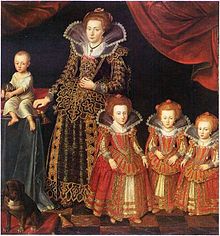
Jacob van Doort (-1629) was a painter of Flemish or Dutch extraction active in portrait miniatures from 1606 to his death in 1629. [1] He did much of his work for the courts of Denmark and Sweden, in particular the court of Christian IV of Denmark.
His own life is not well known. [2] [3] He was possibly the son of Peter van der Doort of Antwerp and the brother of Abraham van Doordt. He may have been born in Hamburg and made a few trips to England. For most of his career he worked in Northern Europe. [4] He died in Stockholm.